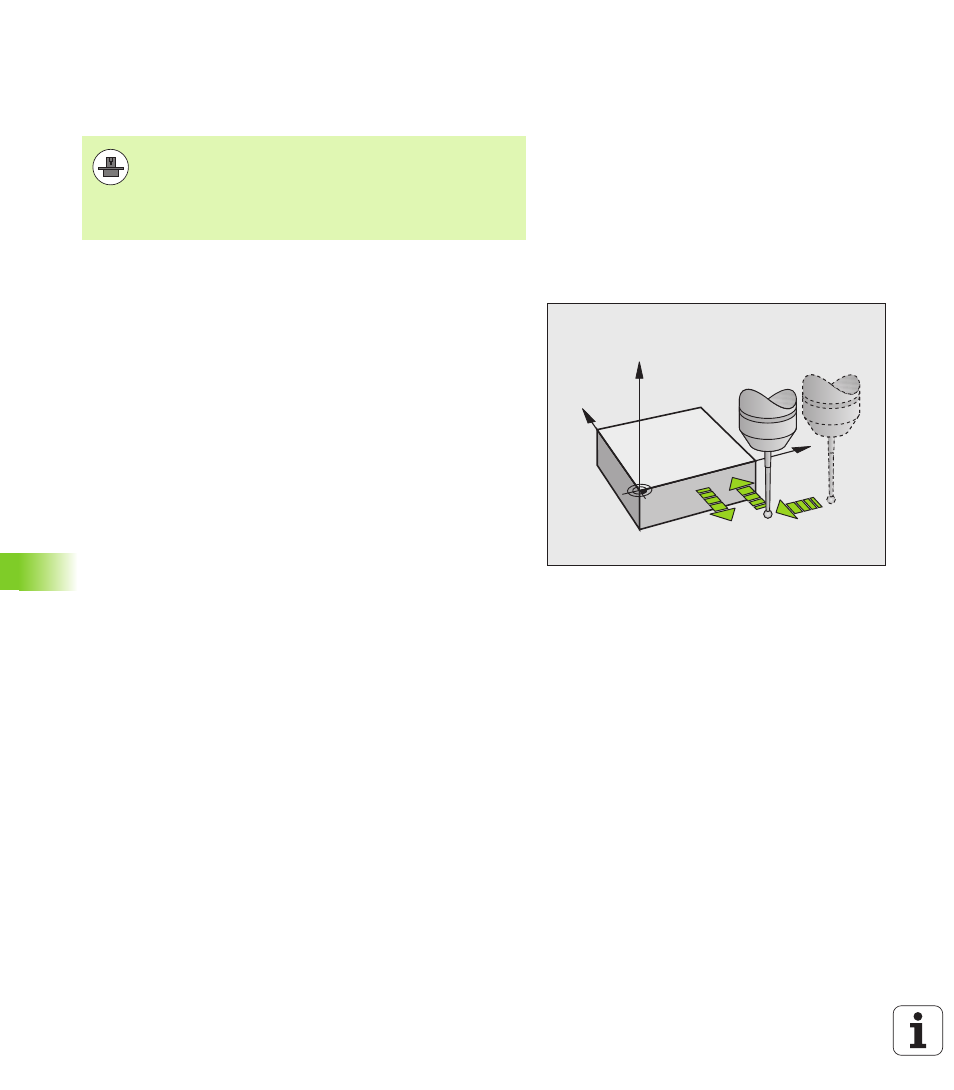1 general information about touch probe cycles, Method of function, Cycles in the manual and el. handwheel modes – HEIDENHAIN TNC 620 (340 56x-02) Cycle programming User Manual
Page 278

278
Using Touch Probe Cycles
13.1 Gener
a
l Inf
o
rm
ation about T
ouc
h Pr
obe Cy
cles
13.1 General Information about
Touch Probe Cycles
Method of function
Whenever the TNC runs a touch probe cycle, the 3-D touch probe
approaches the workpiece in one linear axis. This is also true during an
active basic rotation or with a tilted working plane. The machine tool
builder determines the probing feed rate in a machine parameter (see
“Before You Start Working with Touch Probe Cycles” later in this
chapter).
When the probe stylus contacts the workpiece,
the 3-D touch probe transmits a signal to the TNC: the coordinates
of the probed position are stored,
the touch probe stops moving, and
returns to its starting position at rapid traverse.
If the stylus is not deflected within a defined distance, the TNC
displays an error message (distance: DIST from touch probe table).
Consider a basic rotation in the Manual
Operation mode
During probing the TNC considers an active basic rotation and
approaches the workpiece at an angle.
Cycles in the Manual and El. Handwheel Modes
In the Manual Operation and El. Handwheel modes, the TNC provides
touch probe cycles that allow you to:
Calibrate the touch probe
Compensate workpiece misalignment
Set reference points
The TNC must be specially prepared by the machine tool
builder for the use of a 3-D touch probe. The machine tool
manual provides further information.
The touch probe cycles are available only with the Touch
probe function software option (option number #17).
Y
X
Z
F
F MAX
F
